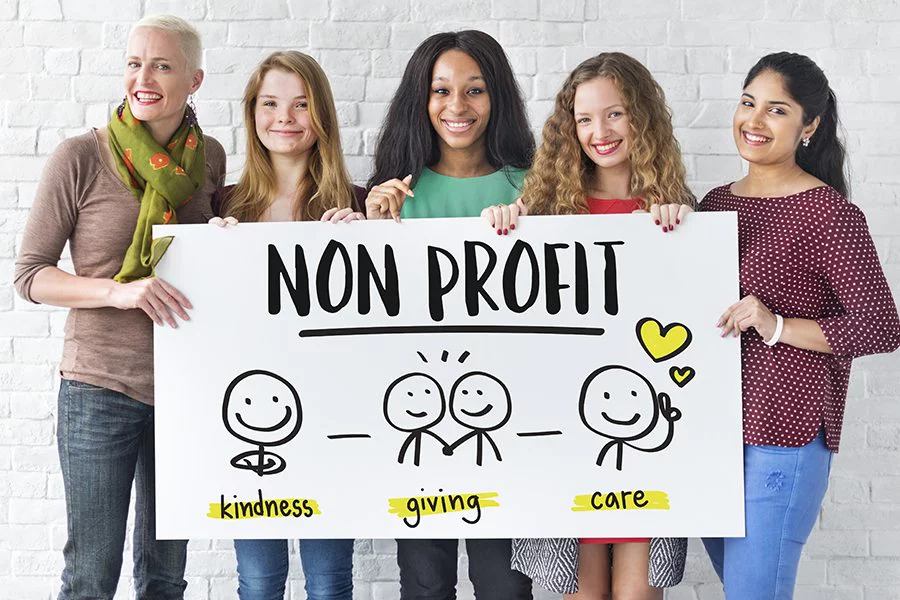Social media marketing has become an essential tool for organizations of all types, including non-profits. Non-profit organizations (NPOs) operate with a mission to serve the public good, often relying on donations, grants, and volunteer support to carry out their work. Social media provides a powerful, cost-effective platform for non-profits to build awareness, engage supporters, and amplify their message. Here’s why social media marketing is crucial for non-profit organizations and how it can help them achieve their goals:

1. Increases Awareness and Reach
Social media platforms, such as Facebook, Instagram, Twitter, LinkedIn, and TikTok, offer non-profits the ability to reach a global audience. With billions of users across these platforms, non-profits can share their mission, stories, and successes with people they might never reach through traditional marketing methods. By consistently posting engaging content, non-profits can increase awareness of their cause and attract new supporters.
Tip:
Create visually compelling posts that explain your mission, share real-life stories of impact, and highlight upcoming events. Use hashtags relevant to your cause to reach a wider audience.
2. Builds Community and Engagement
One of the key strengths of social media marketing is its ability to foster community. Non-profits can engage with their supporters directly by responding to comments, liking posts, or sharing user-generated content. This interaction builds stronger connections with the audience, turning passive followers into active participants in the organization’s mission. Social media also allows NPOs to engage in meaningful conversations about relevant topics, creating a sense of community around shared values.
Tip:
Encourage dialogue by asking questions, starting discussions, and inviting followers to share their thoughts or experiences. Hosting live Q&A sessions or virtual events can further deepen connections with your audience.
3. Cost-Effective Marketing
Unlike traditional marketing channels, social media is largely free to use. While paid ads are available, non-profits can still build significant followings and achieve marketing goals with organic content. For organizations with limited budgets, this offers a cost-effective way to reach and engage with supporters. Many social platforms also offer free tools to help non-profits promote their work and even accept donations directly through the platform, as seen with Facebook’s donation feature.
Tip:
Make use of free tools on social media, such as Facebook and Instagram Stories, to share updates or live content. You can also use free donation buttons on platforms like Facebook and Instagram to encourage direct support from your audience.
4. Promotes Storytelling
Non-profits are in a unique position to tell powerful, emotional stories. Social media provides the perfect platform for sharing the stories of the individuals or communities they serve, their challenges, and the positive impact of their programs. Visual storytelling through videos, photos, and testimonials helps humanize the cause, making it more relatable and compelling to potential supporters.
Tip:
Use a combination of video, images, and written content to tell stories about the people or causes your organization helps. Highlight personal experiences to evoke emotional connections and inspire action.
5. Drives Fundraising Efforts
Social media is a valuable tool for driving donations and fundraising campaigns. With the ability to create viral campaigns, non-profits can raise awareness quickly, inspire people to give, and track the progress of donations in real-time. Crowdfunding campaigns can easily be integrated into social platforms, allowing followers to share fundraising links with their networks, expanding the reach and potential for donations.
Tip:
Launch fundraising campaigns with clear goals and timelines on platforms like Facebook, Instagram, and Twitter. Share success stories from past campaigns to encourage new supporters to contribute.
6. Attracts Volunteers
Non-profits rely heavily on volunteers to carry out their mission. Social media marketing allows non-profits to not only attract new volunteers but also provide updates and communicate directly with existing ones. By showcasing volunteer opportunities and sharing the impact of volunteer work, non-profits can inspire people to contribute their time and skills.
Tip:
Create posts that spotlight your volunteers, sharing their stories and showing the difference they make. Highlight how potential volunteers can get involved and include sign-up links in your social media profiles or posts.
7. Encourages Partnerships and Collaboration
Non-profits often collaborate with other organizations, influencers, or corporations to amplify their message and reach. Social media platforms make it easy to connect with potential partners who share similar values. Through partnerships, non-profits can expand their influence, attract new followers, and boost credibility by aligning with well-known brands or personalities.
Tip:
Identify organizations, influencers, or companies that align with your mission and reach out to them through social media. Collaborating on joint campaigns or events can extend the reach of both parties and create a larger impact.
8. Provides Real-Time Feedback
One of the greatest advantages of social media is the ability to receive real-time feedback. Whether it’s comments on a post, direct messages, or mentions, non-profits can monitor how their audience is responding to their content. This feedback helps non-profits adjust their strategies, better understand their supporters’ needs, and foster more authentic connections.
Tip:
Monitor your social media channels for comments, messages, and mentions, and respond promptly. Use this feedback to refine your campaigns, adjust your messaging, and strengthen relationships with your audience.
9. Builds Credibility and Trust
In today’s digital age, people turn to social media to learn more about organizations and causes. An active and well-curated social media presence builds credibility and trust with potential supporters. Sharing transparent updates on projects, funding, and the outcomes of donations helps demonstrate accountability and reinforces the organization’s legitimacy.
Tip:
Be transparent about how donations are used, share updates on your progress, and thank donors publicly. This transparency fosters trust and encourages ongoing support from your audience.
10. Amplifies Campaigns and Events
Whether you’re hosting a charity gala, a virtual conference, or a fundraising drive, social media is an essential tool for promoting events and campaigns. It allows non-profits to create excitement leading up to the event, share live updates during the event, and post follow-up content to keep the momentum going afterward. Platforms like Facebook and Instagram offer event features that allow followers to RSVP, share, and invite others to join, creating a ripple effect that increases attendance and participation.
Tip:
Use social media to promote your events well in advance, providing updates, countdowns, and sneak peeks to generate excitement. Share real-time photos and videos during the event and follow up afterward with a recap or thank-you post.
Conclusion
For non-profits, social media marketing is not just a nice-to-have—it’s an essential part of building awareness, engaging supporters, driving donations, and advancing their mission. With its cost-effectiveness, global reach, and ability to foster strong community ties, social media helps non-profits overcome budget limitations and expand their impact.


No responses yet